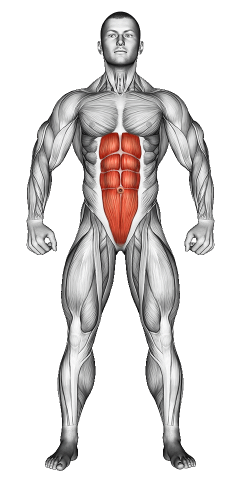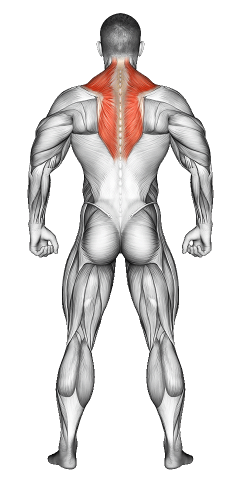High Straight Arm Plank: Video Tutorial & Exercise Guide

Written By: Claude Michael
Updated: Oct 13, 2024
| Workout | High Straight Arm Plank |
| Primary Muscle Group | Abs |
| Secondary Muscle Group | Shoulders |
| Equipment Required | Bodyweight |
| Force Type | Static |
| Mechanics | Isolation |
| Exercise Type | Strength |
| Difficulty | Intermediate |
High Straight Arm Plank: Video Tutorial & Exercise Guide
- 1.High Straight Arm Plank: Muscle Groups
- -1.1Primary Muscle Group
- -1.2Secondary Muscle Group
- 2.High Straight Arm Plank: Step-by-Step Guide
- 3.High Straight Arm Plank: Overview
- 4.High Straight Arm Plank: Benefits
- 5.High Straight Arm Plank: Pro Tips & Advanced Techniques
- 6.High Straight Arm Plank: Progression Plan
- 7.High Straight Arm Plank: Frequently Asked Questions (FAQs)
Secondary Muscles Group
High Straight Arm Plank: Step-by-Step Guide
- Step 1: Start by getting into a push-up position with your hands placed directly under your shoulders and your arms fully extended.
- Step 2: Extend your legs straight behind you, keeping your feet hip-width apart. Balance on the balls of your feet.
- Step 3: Engage your core by pulling your belly button toward your spine, keeping your body in a straight line from your head to your heels.
- Step 4: Keep your neck neutral by looking at a spot on the floor slightly ahead of your hands.
- Step 5: Hold this position for the desired amount of time, focusing on maintaining a tight core and proper alignment.
High Straight Arm Plank: Overview
The high straight arm plank is a core stability exercise that engages your entire body, including your abs, shoulders, arms, and glutes. By maintaining a straight line from head to heels, the plank works as an effective isometric hold to build core strength and endurance.
This exercise is suitable for beginners and advanced athletes alike. It is simple to execute, but holding the position correctly requires good form and focus. As your strength improves, you can increase the duration of the plank for added challenge.
High Straight Arm Plank: Benefits
The high straight arm plank strengthens your core muscles, particularly the rectus abdominis, transverse abdominis, and obliques. Additionally, it engages your shoulders, arms, glutes, and legs, making it an excellent full-body exercise for improving overall stability and posture.
This exercise can also help reduce the risk of lower back pain by improving core stability and enhancing your ability to maintain proper posture during everyday activities.
High Straight Arm Plank: Pro Tips & Advanced Techniques
For better results, focus on engaging your core throughout the entire exercise, keeping your body in a straight line without letting your hips sag or rise. You can increase the difficulty by lifting one foot off the ground or adding movement, such as shoulder taps, while maintaining the plank position.
High Straight Arm Plank: Progression Plan
Beginner
Intermediate
Advanced
High Straight Arm Plank: Frequently Asked Questions (FAQs)
What muscles do high straight arm planks target?
+This exercise primarily targets your core, including the abs and obliques, while also engaging your shoulders, arms, and glutes for stability.
How does the high straight arm plank differ from the forearm plank?
+The high plank, performed with straight arms, places more emphasis on the shoulders and arms, while the forearm plank puts more direct tension on the core muscles.
Can beginners do the high straight arm plank?
+Yes, it's a great exercise for beginners to build core strength. Start with shorter holds and focus on form before increasing the duration.
How often should I do this exercise?
+You can incorporate the high straight arm plank 3-4 times per week as part of your core workout routine or at the end of a full-body workout.
What common mistakes should I avoid?
+Avoid letting your hips sag or lifting them too high. Keep your core engaged and ensure your body forms a straight line from head to heels.
Share
Don’t Wish for It, Work for It – Join the FlexXP Newsletter Today!
Thank you for signing up for the FlexXP Newsletter!
This site is protected and the Google Privacy Policy and Terms of Service apply.

